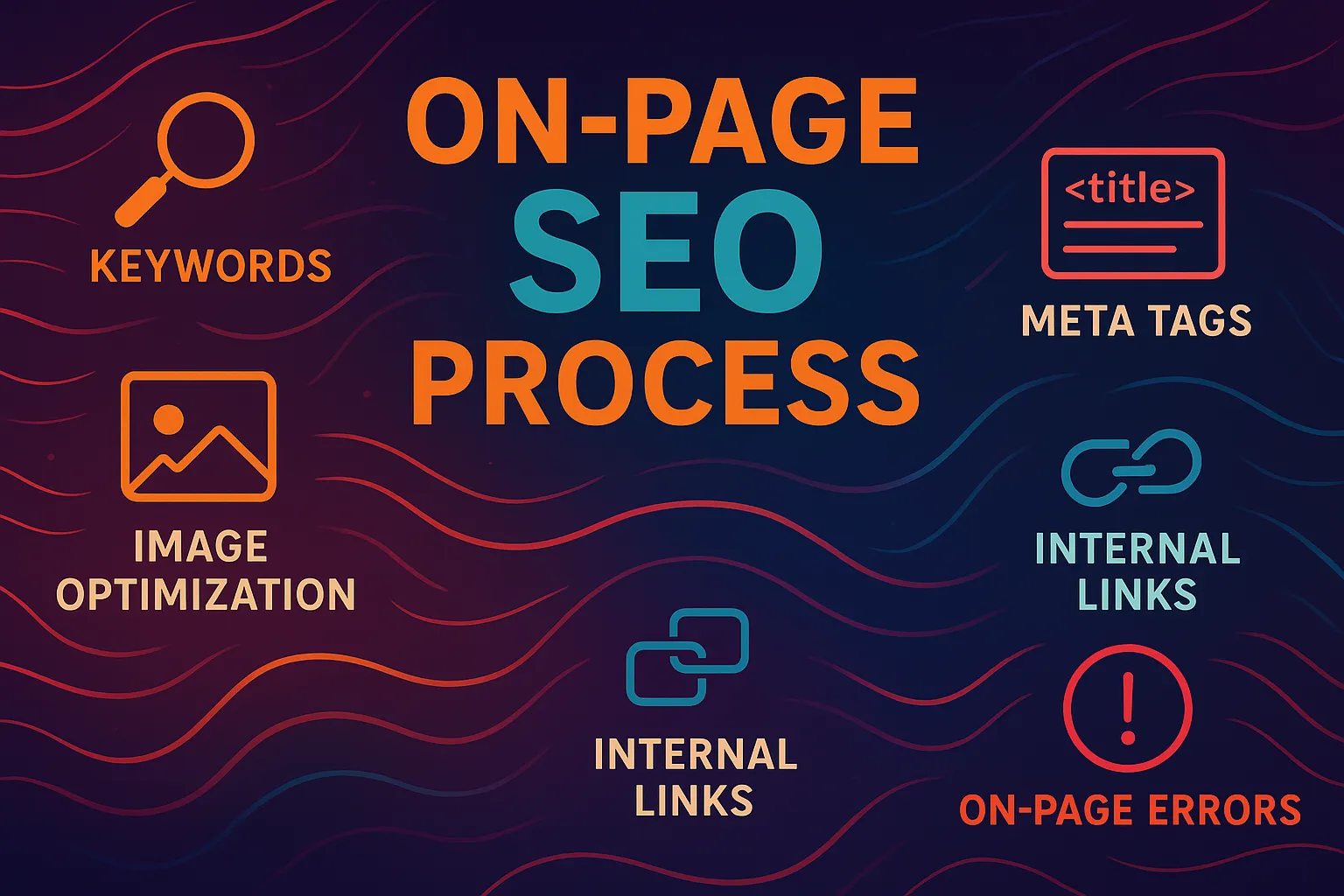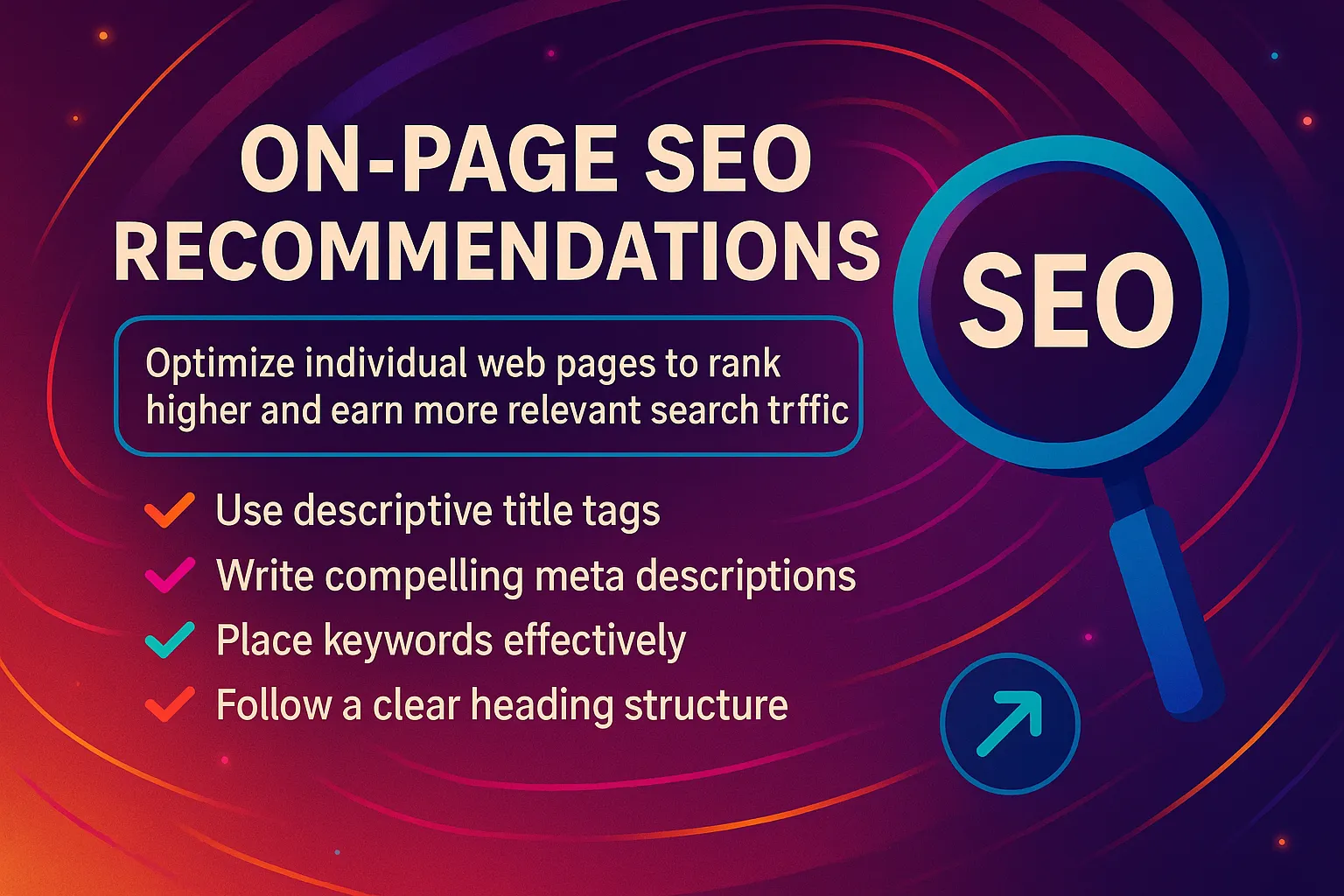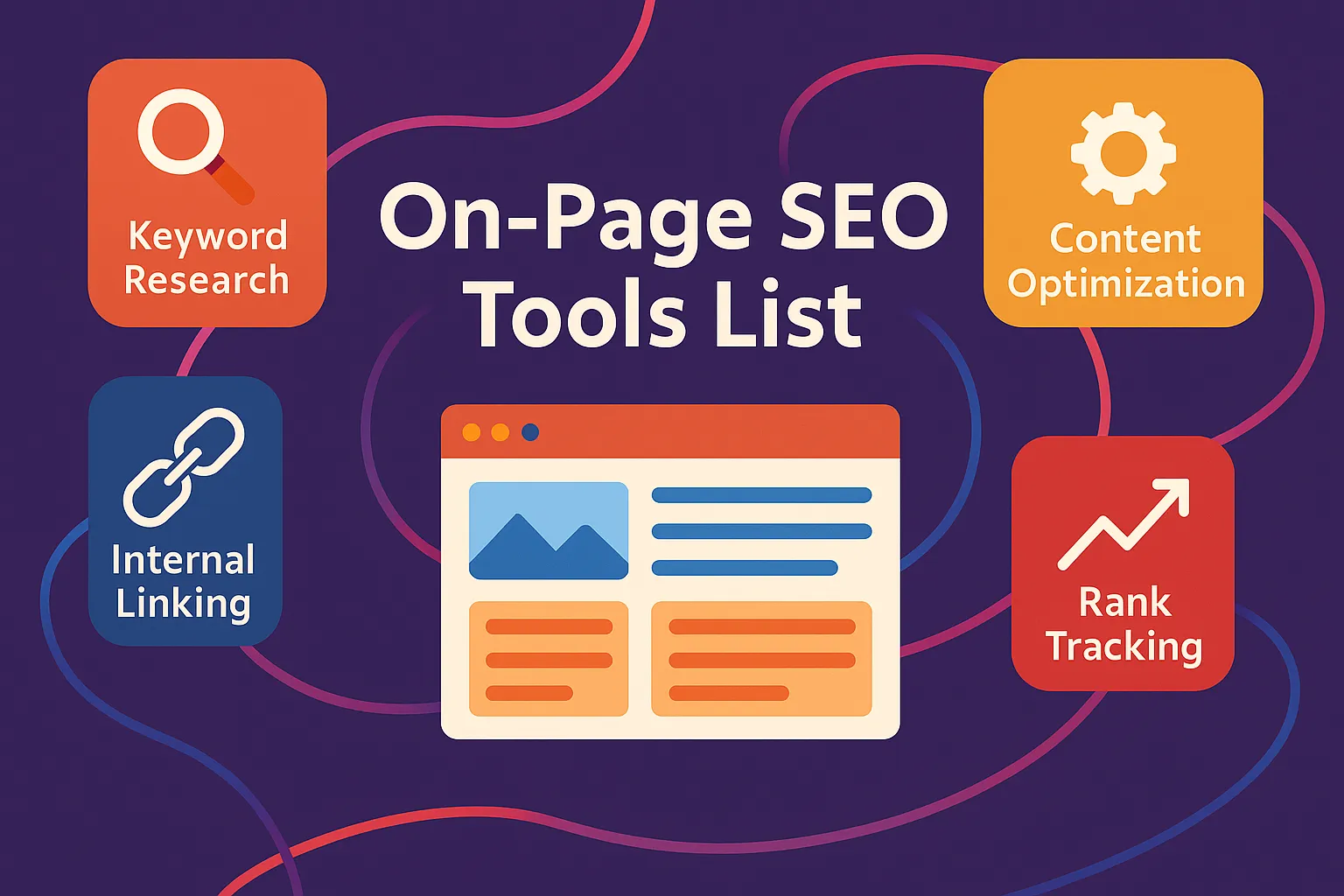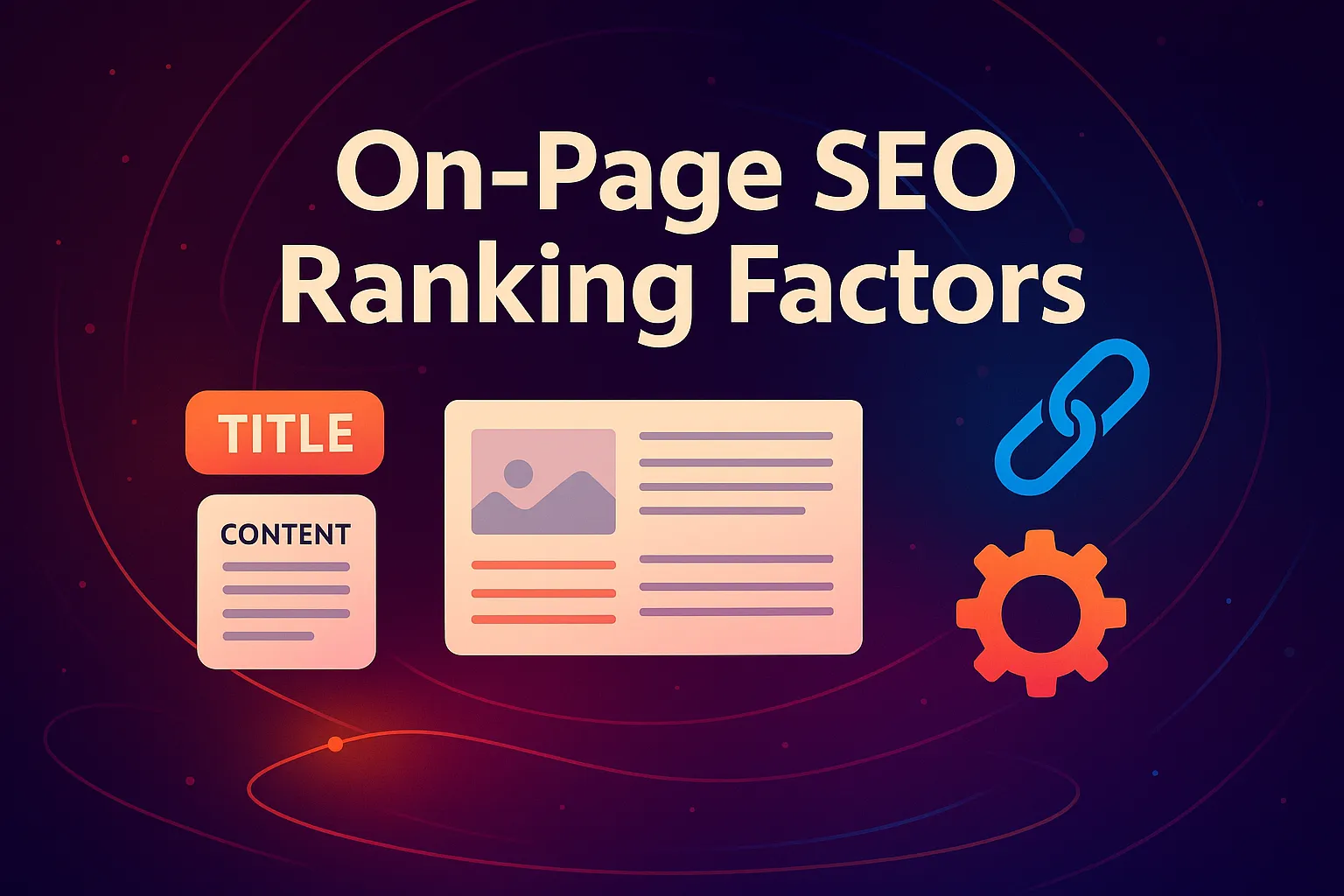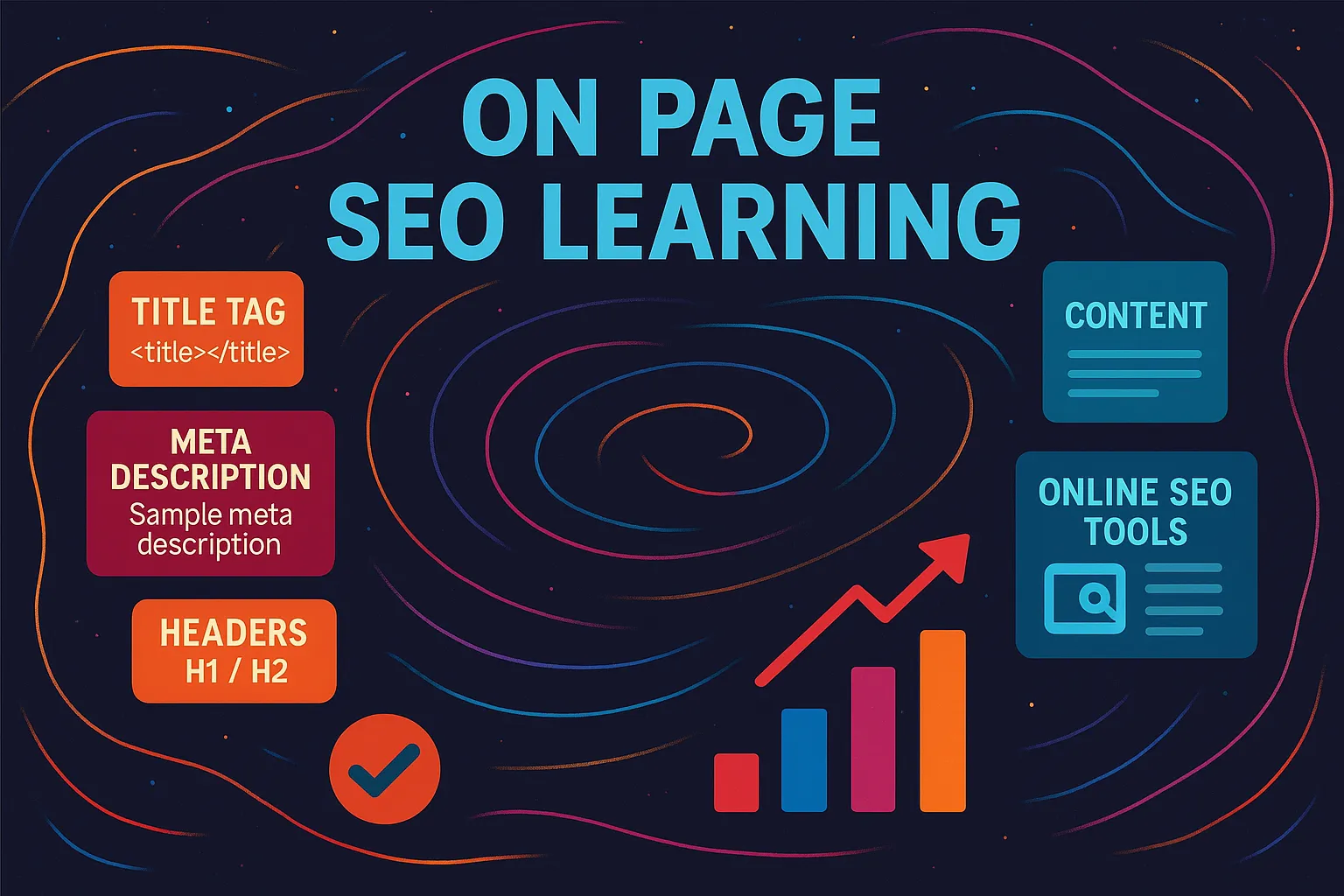What Is the On Page SEO Process?
The on page SEO process is how we improve a webpage so it can rank higher on Google and give visitors what they came for. That includes writing better titles, adding keywords in the right spots, improving page speed, linking to other pages, and making sure every element makes sense for search engines and users.
Unlike off-page SEO, which is all about what happens outside of your website (like getting backlinks), this process focuses on the work we do directly on your site. At Vibe Branding, we treat the on page SEO process as the foundation of everything we do in digital marketing.
Without it, all the backlinks and paid ads in the world won’t save a page from low rankings. Our team has spent the last decade mastering this process, tweaking it, learning what works, and refining it so that our clients see measurable growth month after month.
TL;DR – What You’ll Learn in This Post
- A step-by-step breakdown of the on page SEO process we use at Vibe Branding
- Why this process matters for Google rankings and your visitors
- How we use 10+ years of experience to drive real traffic
- The tools, structure, and habits that make great SEO repeatable
- Mistakes to avoid and what actually works in 2025
Why On Page SEO Matters in 2025
In the past, you could just stuff keywords on a page and hope for the best. But Google has gotten smarter.
It now looks at how useful your page is, how fast it loads, how well it answers a question, and how easy it is to use on a phone. That’s why the on page SEO process is more important than ever.
Google wants the best answer for every search, and your page has to prove it deserves to be on that first page. At Vibe Branding, we’ve seen the difference firsthand.
One of our clients went from 300 monthly visits to over 5,000 after we updated their on page SEO. No extra backlinks, no new ads—just smarter formatting, better content, and fixing technical SEO issues that were slowing things down.
When you follow the right process, the growth feels inevitable. We always tell clients: great SEO doesn’t happen by accident.
It’s a strategy. It’s consistent.
And it starts with your website.

Our On Page SEO Framework: Core Elements
So, what actually makes up the on page SEO process? It starts with a few key elements that we focus on every time we optimize a page.
Think of it like a checklist, only smarter. We don’t blindly follow rules—we make data-backed decisions.
Here’s how we break it down:
- Page Title & H1
We make sure the main keyword appears early and naturally in both. This helps Google understand the topic and improves your click-through rate. - Meta Description
This short summary should give a reason to click. It’s not a ranking factor, but it’s huge for getting traffic from the search results. - Headings & Content Hierarchy
Your content should be easy to skim. We use H2s, H3s, and sometimes even H4s to organize everything. A great page lets readers jump to what they need. - Keyword Placement
We aim for 1 main keyword and 2-4 related keywords, used naturally across the page—in the intro, headings, and image alt text. - Internal and External Links
Linking to other pages on your site helps users and crawlers. We also link to authoritative sites to boost trust and relevance. - Image Optimization
Images should load fast, be descriptive, and have alt text with your keyword (if it makes sense). - URL Structure
Short, clear, and keyword-focused URLs tend to perform best. - Content Freshness
We revisit old content every few months to update stats, links, and structure based on performance.
This is not just theory—this is what’s working right now for us and our clients.
How We Choose Keywords That Actually Drive Traffic
We never guess our keywords. We use tools like Semrush and Google Search Console to see what people are really searching for.
The goal is to find a balance: not too competitive, but still enough volume to be worth the effort. We look for high-intent queries that show someone is looking for a real solution.
For example, if someone searches “best CRM for small teams,” we know they’re in decision-making mode. That keyword is gold.
We pick a primary keyword like that, then gather related terms (also called LSI keywords) to support it throughout the content. When you use natural language and match search intent, your content becomes more relevant—and Google notices.
At Vibe, we also check the current top-ranking pages before we even start writing. What kind of content are they publishing?
How long is it? Are there gaps we can fill or better angles we can offer?
It’s like competitive research, but for SEO. We always aim to make something better, more helpful, and easier to read.
Structuring Content for Humans and Search Engines
We write for humans first. Period. That means short paragraphs, clear headers, bullet points, and visuals that explain instead of just decorate.
But we also build the structure so that Google can read it easily, too. Every page starts with an H1 tag that matches the page title.
Then we build out H2s that map to the reader’s questions. We even add H3s under H2s when a topic needs more detail.
This kind of structure is what Google uses to create featured snippets or sitelinks in search results. We also use a technique we call “scannable storytelling.”
It means that if you just read the headers and bolded phrases, you’ll get the whole point of the article. That helps both busy users and Google crawlers, and it reduces bounce rates dramatically.
More time on site = better SEO. This structured content format also helps us plan longer content without losing focus.
Every section has a purpose and keeps the reader moving down the page.

How We Write Better Titles and Meta Descriptions
Writing titles isn’t just about stuffing in keywords. It’s about catching someone’s eye.
We use power words, numbers, and front-load the value. A title like “How the On Page SEO Process Tripled Our Traffic in 6 Months” does a lot more than “SEO Tips for Beginners.”
We apply this thinking to every page. Our title formulas follow this logic: Keyword + Benefit + Hook.
For example: “The On Page SEO Process: How to Rank Higher With Less Effort.” Meta descriptions are your second chance to win the click.
We treat them like micro-ads. You only get about 155 characters to make someone care, so every word counts.
We usually include the keyword, a benefit, and a soft CTA like “Learn more” or “Read the full process.” And we test!
Our agency often runs A/B tests with multiple variations using platforms like Google Optimize to see which ones get better CTRs over time. We don’t rely on gut instinct—we let the numbers guide us.
The Link Strategy That Builds Trust and Rankings
Internal links are the secret weapon of the on page SEO process. They help Google understand your site structure and they help readers go deeper into your content.
At Vibe, we have a rule: every page should link to 2-5 other pages, and each link should use anchor text that makes sense in context. We also link to external sites—but only the best ones.
If we mention a stat, we link to the source. If we reference a study, we back it up.
Google sees those links as signs that your content is trustworthy and well-researched. And in 2025, trust is a major ranking factor.
It’s also about user experience. Think about it: when you’re reading an article and see a helpful link, you’re more likely to stay engaged.
That reduces bounce rate and increases time on site—two signals Google watches closely. We keep an internal database of our best-performing pages and use that to guide our linking strategy.
This helps us pass authority from older content to new pages we’re trying to rank. It’s smart, simple, and super effective.
Mistakes to Avoid When Doing On Page SEO
Even with 10+ years in the business, we still run audits and spot errors. One of the most common?
Pages that don’t target a clear keyword or have five different topics competing for attention. That confuses Google and your readers.
Another major issue is slow loading speeds. We’ve seen beautifully written content stuck on page three of Google simply because the images weren’t optimized or the scripts were too heavy.
Use tools like PageSpeed Insights to fix that fast. Don’t forget mobile, either.
If your page is hard to read or navigate on a phone, your rankings will suffer. Google is mobile-first now.
Your design has to work everywhere. Avoid keyword stuffing at all costs.
One of the signals we often see penalized is repetition for the sake of ranking. Google knows when you’re overdoing it. Use your keyword naturally and focus on quality.
Finally, never let a good page sit untouched. Even your best-performing content should be updated regularly.
New stats, fresh links, and improved formatting can make a huge difference.

How We Measure Success (and You Can Too)
Tracking results is one of our favorite parts of the on page SEO process. Why?
Because it shows the payoff of smart strategy. We track rankings weekly using Semrush, and we cross-check that with traffic trends in Google Analytics.
We also monitor behavior metrics like bounce rate, time on page, and scroll depth. If those go up, we know we’re doing something right.
If they go down, we know it’s time for an update. CTR (click-through rate) is another big one.
We often make small changes to meta descriptions and titles and watch the difference it makes. Even a 0.5% lift can mean hundreds more visitors every month.
For clients, we include on page SEO performance in their monthly reports. That includes what changed, how it performed, and what we’ll tweak next.
This kind of transparency builds trust—and it works. And most importantly, we track conversions. Because traffic is great, but results are what count.
Making the On Page SEO Process a Habit
If you want your site to grow, you need to treat on page SEO like brushing your teeth. It’s not a one-and-done thing.
It’s a habit. At Vibe Branding, we run monthly content audits and quarterly refresh cycles.
Every new piece of content is optimized from the start. We also train our writers, developers, and designers in SEO.
Everyone has a role to play. That’s why we’ve been able to consistently get results for clients in dozens of industries for over a decade.
If you made it this far, you now have a complete roadmap. The on page SEO process isn’t just a task—it’s the difference between digital visibility and digital silence.
And now, you know exactly how to execute it. So go ahead, bookmark this page.
Share it with your team. Print it out and tape it to your wall.
Because when you do the work, SEO starts working for you. And if you want help building this process into your marketing plan, reach out to us at Vibe Branding.
We’re not just digital marketers—we’re your partners in long-term growth.

